-
 Bitcoin
Bitcoin $107,443.3008
-1.17% -
 Ethereum
Ethereum $2,494.2503
-0.63% -
 Tether USDt
Tether USDt $1.0003
0.00% -
 XRP
XRP $2.2496
2.23% -
 BNB
BNB $658.7569
0.63% -
 Solana
Solana $154.9826
1.94% -
 USDC
USDC $1.0000
0.01% -
 TRON
TRON $0.2799
1.07% -
 Dogecoin
Dogecoin $0.1659
-1.78% -
 Cardano
Cardano $0.5745
0.25% -
 Hyperliquid
Hyperliquid $39.7005
0.13% -
 Bitcoin Cash
Bitcoin Cash $519.5989
3.78% -
 Sui
Sui $2.7874
-2.40% -
 Chainlink
Chainlink $13.3762
-1.69% -
 UNUS SED LEO
UNUS SED LEO $9.0784
-0.64% -
 Avalanche
Avalanche $17.9846
-2.81% -
 Stellar
Stellar $0.2390
-0.06% -
 Toncoin
Toncoin $2.9028
0.25% -
 Shiba Inu
Shiba Inu $0.0...01147
-2.17% -
 Litecoin
Litecoin $86.6956
-1.27% -
 Hedera
Hedera $0.1508
-0.50% -
 Monero
Monero $322.6222
3.26% -
 Polkadot
Polkadot $3.4124
-2.99% -
 Dai
Dai $0.9999
0.00% -
 Bitget Token
Bitget Token $4.5434
-1.97% -
 Ethena USDe
Ethena USDe $1.0002
0.00% -
 Uniswap
Uniswap $7.1562
-2.61% -
 Aave
Aave $275.8830
-1.02% -
 Pepe
Pepe $0.0...09790
-4.04% -
 Pi
Pi $0.5018
-5.09%
Where to view USDT address in Trust Wallet
To find your USDT address in Trust Wallet, open the app, select USDT, tap 'Receive', and choose the network (TRC-20 or ERC-20) to view your address.
Apr 05, 2025 at 03:35 pm
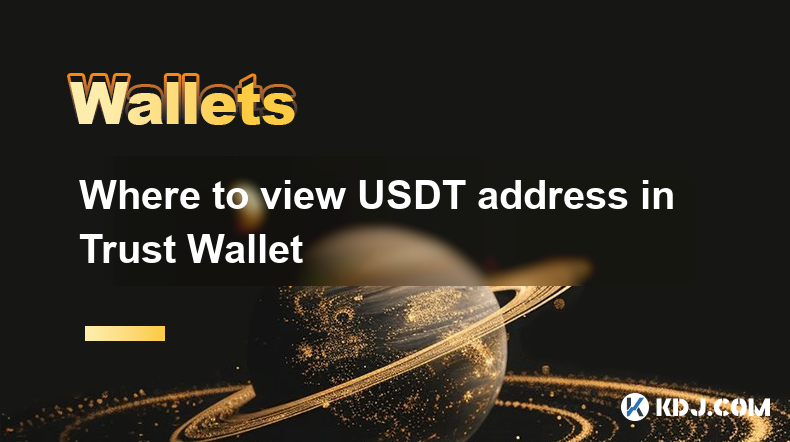
When using Trust Wallet to manage your cryptocurrencies, understanding where to find your USDT address is crucial for receiving transactions. Trust Wallet supports multiple blockchain networks for USDT, including TRC-20 and ERC-20, each with its own unique address. To view your USDT address, you first need to ensure that you have the Trust Wallet app installed on your mobile device. Once installed, open the app and navigate to the main wallet screen where all your assets are displayed. From there, you can easily access your USDT address depending on the network you wish to use.
Accessing Your USDT Address in Trust Wallet
To begin, open the Trust Wallet app on your smartphone. On the main screen, you will see a list of your cryptocurrencies. Scroll through or search for USDT. Once you locate USDT, tap on it to open the USDT wallet screen. Here, you will see options like 'Receive' and 'Send'. To view your USDT address, tap on the 'Receive' button. This action will bring up a new screen displaying your USDT address for the selected network.
Choosing the Right Network for USDT
Trust Wallet supports USDT on different networks, primarily TRC-20 and ERC-20. It's important to choose the correct network when receiving USDT to avoid transaction issues. When you tap on 'Receive' in the USDT wallet, you will be prompted to select the network. For TRC-20, the address will start with a 'T', while for ERC-20, it will start with '0x'. Make sure to communicate the correct network to the sender to ensure the transaction goes through smoothly.
Copying and Sharing Your USDT Address
Once you have selected the desired network, your USDT address will be displayed on the screen. You can copy this address by tapping on the 'Copy' button next to it. Trust Wallet also provides a QR code for your address, which can be scanned by the sender for a quick and error-free transfer. It's crucial to double-check the address before sharing it to prevent any errors that could lead to lost funds.
Verifying Your USDT Address
Before sharing your USDT address, it's a good practice to verify it. You can do this by sending a small test transaction to yourself or using a blockchain explorer to check the address's validity. To use a blockchain explorer, copy your USDT address and paste it into the search bar of a relevant explorer (e.g., Tronscan for TRC-20 or Etherscan for ERC-20). If the address appears in the explorer, it confirms that it is valid and ready to receive funds.
Managing Multiple USDT Addresses
If you need to manage multiple USDT addresses within Trust Wallet, you can create additional wallets for different purposes. To do this, go to the settings menu in Trust Wallet, select 'Wallets', and then 'Add Wallet'. You can then set up a new wallet and repeat the process of finding the USDT address as described earlier. This feature is useful for separating funds for different uses or for privacy reasons.
Security Tips for Your USDT Address
Securing your USDT address is paramount to protect your funds. Here are some security tips to consider:
- Never share your private keys or recovery phrases with anyone. These are used to access your wallet and should be kept confidential.
- Use strong, unique passwords for your device and Trust Wallet app.
- Enable two-factor authentication (2FA) if available to add an extra layer of security.
- Be cautious of phishing attempts. Always verify the authenticity of websites and apps before entering your information.
- Regularly update the Trust Wallet app to ensure you have the latest security features and bug fixes.
Troubleshooting Common Issues with USDT Addresses
Sometimes, users may encounter issues when dealing with USDT addresses in Trust Wallet. Here are some common problems and their solutions:
- Address not recognized: Ensure you are using the correct network (TRC-20 or ERC-20) and that the address is entered correctly.
- Transaction not received: Check the transaction status on a blockchain explorer. It may be pending or stuck due to network congestion.
- Wrong network selected: If you sent USDT to the wrong network, contact the sender to see if the transaction can be reversed. Otherwise, the funds may be lost.
Using USDT Addresses for Different Purposes
USDT addresses in Trust Wallet can be used for various purposes, such as:
- Receiving payments: Share your USDT address with clients or customers to receive payments.
- Staking and earning interest: Some platforms allow you to stake USDT to earn interest. You can use your Trust Wallet address to participate in these programs.
- Trading on decentralized exchanges (DEXs): Use your USDT address to deposit funds into DEXs for trading other cryptocurrencies.
Keeping Track of Your USDT Transactions
To keep track of your USDT transactions, you can use the transaction history feature in Trust Wallet. Here's how:
- Open the USDT wallet in Trust Wallet.
- Tap on the 'Transactions' tab to view a list of all incoming and outgoing transactions.
- For more detailed information, you can use a blockchain explorer by copying the transaction hash and pasting it into the explorer's search bar.
Understanding USDT Address Formats
USDT addresses can vary in format depending on the network. Here's a brief overview:
- TRC-20 (Tron Network): Addresses start with 'T' and are typically 34 characters long.
- ERC-20 (Ethereum Network): Addresses start with '0x' and are 42 characters long.
Understanding these formats can help you identify and use the correct address for your transactions.
Best Practices for Using USDT Addresses
To ensure smooth and secure transactions, follow these best practices:
- Always double-check the address before sending or receiving USDT.
- Use the correct network for the transaction to avoid losing funds.
- Keep your USDT addresses organized, especially if you manage multiple wallets.
- Regularly back up your wallet to prevent loss of access to your funds.
Common Questions Related to Viewing USDT Address in Trust Wallet
Q: How do I find my USDT address in Trust Wallet?
A: Open the Trust Wallet app, navigate to the USDT wallet, and tap on 'Receive'. Select the desired network (TRC-20 or ERC-20), and your address will be displayed.
Q: Can I use the same USDT address for both TRC-20 and ERC-20 networks?
A: No, you need to use different addresses for each network. TRC-20 addresses start with 'T', while ERC-20 addresses start with '0x'.
Q: What should I do if I accidentally send USDT to the wrong network?
A: If you send USDT to the wrong network, contact the sender to see if the transaction can be reversed. If not, the funds may be lost.
Q: How can I verify my USDT address?
A: You can verify your USDT address by sending a small test transaction to yourself or using a blockchain explorer to check the address's validity.
Q: Is it safe to share my USDT address with others?
A: Yes, it is safe to share your USDT address. However, never share your private keys or recovery phrases, as these can be used to access your wallet.
Q: Can I have multiple USDT addresses in Trust Wallet?
A: Yes, you can create multiple wallets within Trust Wallet, each with its own USDT address for different purposes.
Q: How do I keep track of my USDT transactions in Trust Wallet?
A: You can view your USDT transactions by opening the USDT wallet in Trust Wallet and tapping on the 'Transactions' tab. For more detailed information, use a blockchain explorer with the transaction hash.
Disclaimer:info@kdj.com
The information provided is not trading advice. kdj.com does not assume any responsibility for any investments made based on the information provided in this article. Cryptocurrencies are highly volatile and it is highly recommended that you invest with caution after thorough research!
If you believe that the content used on this website infringes your copyright, please contact us immediately (info@kdj.com) and we will delete it promptly.
- BTCBULL: Riding Bitcoin's Bull Run to Crypto Glory
- 2025-07-01 20:30:11
- Bitcoin's July Jolt: Will We See a New ATH?
- 2025-07-01 20:30:11
- Bitcoin Cash Price Surges to 8-Month High: Is $1,700 Next?
- 2025-07-01 20:35:12
- Solana, Pepe Coin, Crypto Meme Mania: What's Hot and What's Not?
- 2025-07-01 19:10:12
- Bitcoin Cash Price Pump: Unpacking the Reasons Behind the Surge
- 2025-07-01 18:30:12
- Dogecoin's Wild Ride: Rally Potential Amidst Investor Panic?
- 2025-07-01 19:10:12
Related knowledge
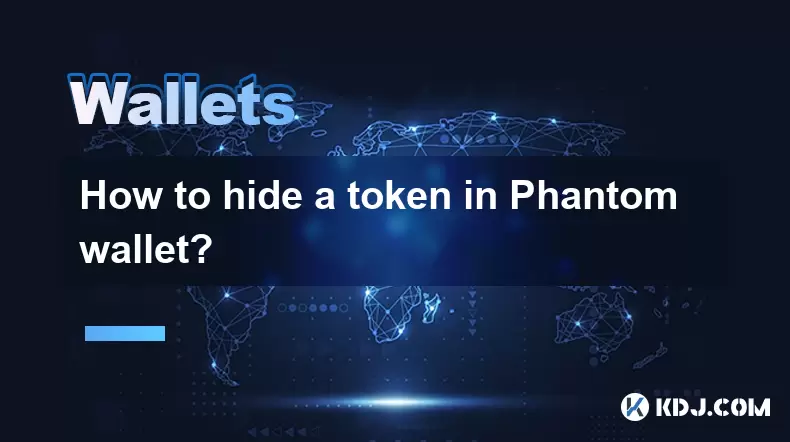
How to hide a token in Phantom wallet?
Jul 01,2025 at 05:49pm
Understanding the Phantom Wallet InterfacePhantom wallet is a popular non-custodial wallet used primarily for interacting with the Solana blockchain. It allows users to store, send, receive, and manage various tokens, including both fungible and non-fungible tokens (NFTs). Before attempting to hide a token, it's essential to understand how the wallet in...
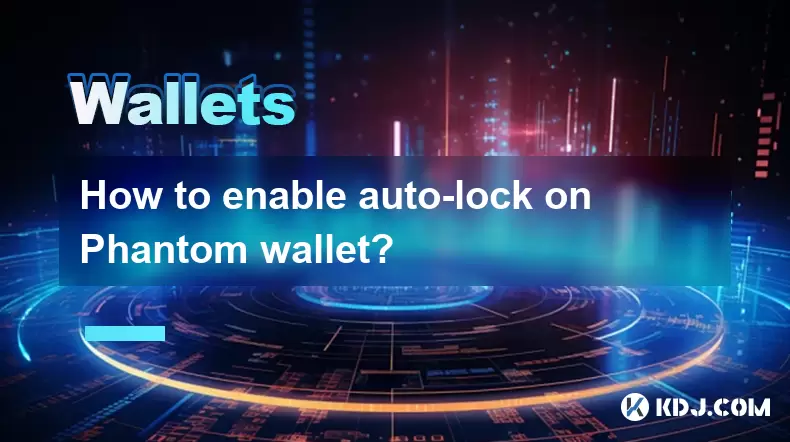
How to enable auto-lock on Phantom wallet?
Jul 01,2025 at 04:01pm
What is Auto-Lock in Phantom Wallet?Phantom wallet is a popular non-custodial cryptocurrency wallet used primarily for interacting with the Solana blockchain. One of its security features includes the ability to set an auto-lock timer, which ensures that the wallet locks itself automatically after a period of inactivity. Auto-lock enhances security by p...
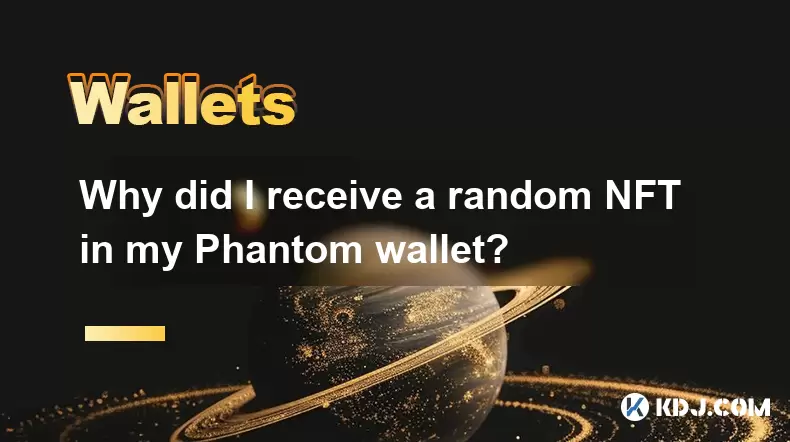
Why did I receive a random NFT in my Phantom wallet?
Jul 01,2025 at 09:00pm
Receiving an Unexpected NFT in Your Phantom WalletIf you've recently opened your Phantom wallet and noticed an unfamiliar NFT appearing in your collection, you're not alone. Many users have reported receiving random or unsolicited non-fungible tokens, often without any prior interaction with the project or sender. This phenomenon has become increasingly...
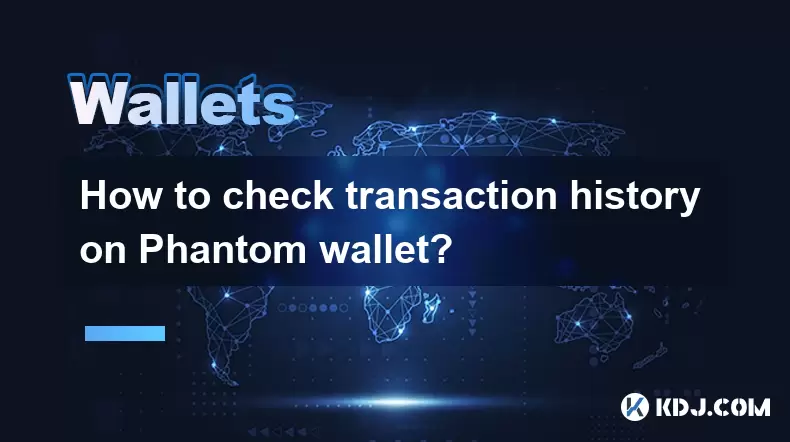
How to check transaction history on Phantom wallet?
Jul 01,2025 at 07:49pm
What Is Phantom Wallet?Phantom wallet is a popular non-custodial cryptocurrency wallet primarily used for interacting with the Solana blockchain. It allows users to store, send, receive, and manage their Solana-based tokens and NFTs securely. One of the essential features of any crypto wallet is the ability to check transaction history. Understanding ho...
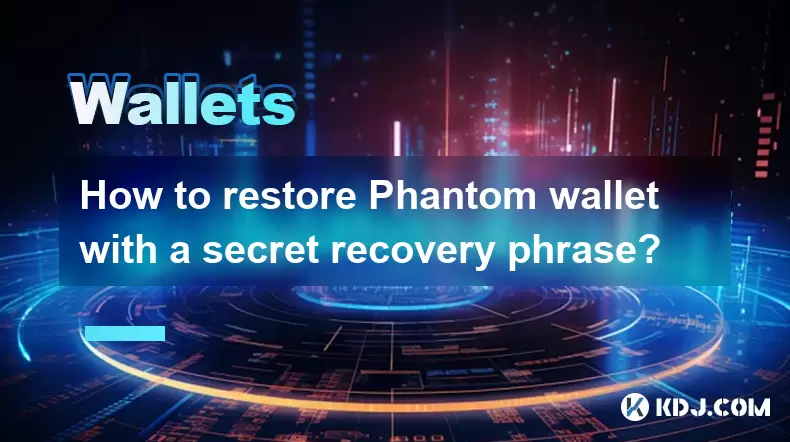
How to restore Phantom wallet with a secret recovery phrase?
Jul 01,2025 at 02:56pm
What is a Phantom wallet and why might you need to restore it?Phantom is a popular non-custodial cryptocurrency wallet primarily used for interacting with the Solana blockchain. It allows users to store, send, receive, and stake SOL tokens as well as manage NFTs and other SPL tokens. Since Phantom wallet is non-custodial, users are solely responsible fo...
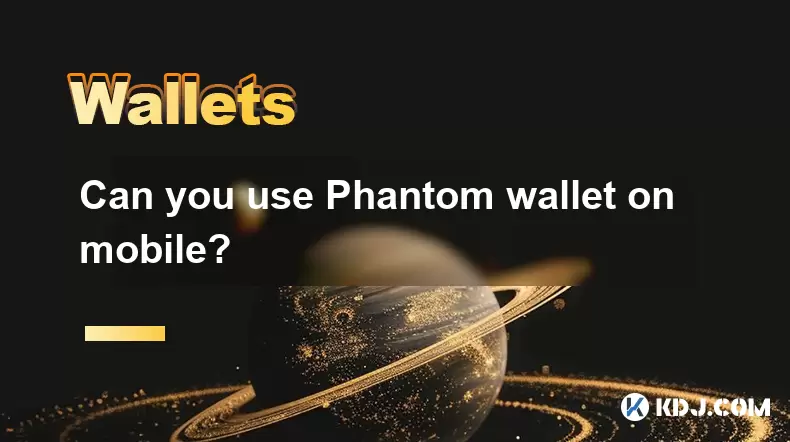
Can you use Phantom wallet on mobile?
Jul 01,2025 at 06:07pm
Understanding Phantom Wallet and Its Mobile CompatibilityPhantom wallet is a non-custodial cryptocurrency wallet primarily designed for interacting with the Solana blockchain. Initially developed as a browser extension, Phantom has expanded its functionality to include mobile platforms. This means users can access their Solana-based assets on mobile dev...

How to hide a token in Phantom wallet?
Jul 01,2025 at 05:49pm
Understanding the Phantom Wallet InterfacePhantom wallet is a popular non-custodial wallet used primarily for interacting with the Solana blockchain. It allows users to store, send, receive, and manage various tokens, including both fungible and non-fungible tokens (NFTs). Before attempting to hide a token, it's essential to understand how the wallet in...

How to enable auto-lock on Phantom wallet?
Jul 01,2025 at 04:01pm
What is Auto-Lock in Phantom Wallet?Phantom wallet is a popular non-custodial cryptocurrency wallet used primarily for interacting with the Solana blockchain. One of its security features includes the ability to set an auto-lock timer, which ensures that the wallet locks itself automatically after a period of inactivity. Auto-lock enhances security by p...

Why did I receive a random NFT in my Phantom wallet?
Jul 01,2025 at 09:00pm
Receiving an Unexpected NFT in Your Phantom WalletIf you've recently opened your Phantom wallet and noticed an unfamiliar NFT appearing in your collection, you're not alone. Many users have reported receiving random or unsolicited non-fungible tokens, often without any prior interaction with the project or sender. This phenomenon has become increasingly...

How to check transaction history on Phantom wallet?
Jul 01,2025 at 07:49pm
What Is Phantom Wallet?Phantom wallet is a popular non-custodial cryptocurrency wallet primarily used for interacting with the Solana blockchain. It allows users to store, send, receive, and manage their Solana-based tokens and NFTs securely. One of the essential features of any crypto wallet is the ability to check transaction history. Understanding ho...

How to restore Phantom wallet with a secret recovery phrase?
Jul 01,2025 at 02:56pm
What is a Phantom wallet and why might you need to restore it?Phantom is a popular non-custodial cryptocurrency wallet primarily used for interacting with the Solana blockchain. It allows users to store, send, receive, and stake SOL tokens as well as manage NFTs and other SPL tokens. Since Phantom wallet is non-custodial, users are solely responsible fo...

Can you use Phantom wallet on mobile?
Jul 01,2025 at 06:07pm
Understanding Phantom Wallet and Its Mobile CompatibilityPhantom wallet is a non-custodial cryptocurrency wallet primarily designed for interacting with the Solana blockchain. Initially developed as a browser extension, Phantom has expanded its functionality to include mobile platforms. This means users can access their Solana-based assets on mobile dev...
See all articles

























































































